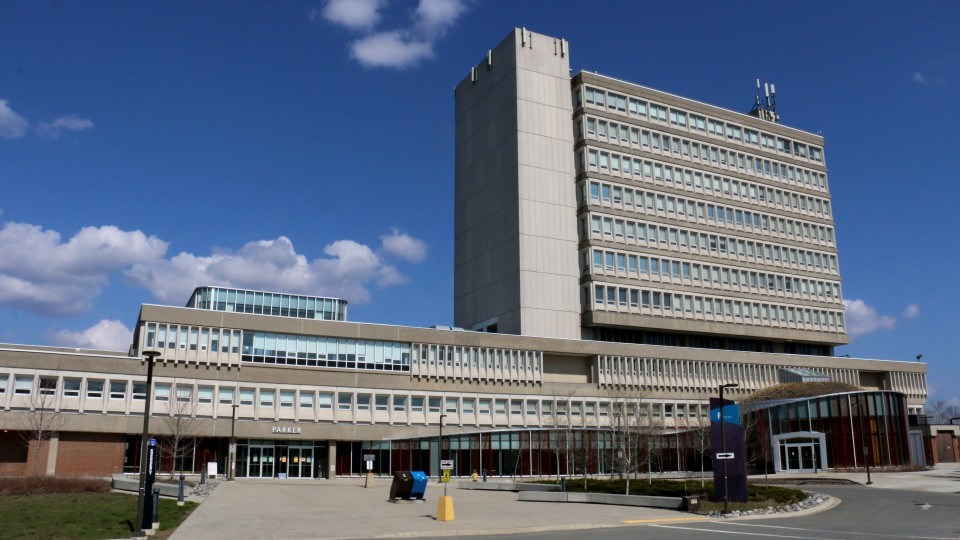Lawyers for insolvent Laurentian University petitioned the courts Thursday for a number of actions that will set it up for the next phase of its restructuring as part of the Companies Creditors’ Arrangement Act (CCAA) process.
DJ Miller, the lawyer for Laurentian, is asking for the following on behalf of the university:
- The extension of the stay of proceedings protecting it from its creditors until Aug. 31.
- The approval of a further $10 million in debtor-in-possession interim funding (over and above the $25 million DIP loan Laurentian took out this winter as it faced insolvency)
- The approval of “term sheets” for two groups of unionized employees (the Laurentian University Faculty Association, or LUFA, and the Laurentian University Staff Union, or LUSU) that outline job cuts, among other things
- The approval of the Huntington University transition agreement, that would see Laurentian purchase Huntington’s popular gerontology program.
Chief Justice Geoffrey Morawetz was also asked to deal with the issue of Laurentian University’s plans to terminate or “disclaim” the federation agreement with the three federated universities operating on campus as of May 1.
Thorneloe University is fighting Laurentian’s plans to end the more than 60-year-old federation agreement going back to the university’s creation, as is the University of Sudbury. Huntington University, as noted above, has reached a transition agreement with Laurentian.
Represented by lawyer Andrew Hatnay, Thorneloe presented the federated university’s opposition to this plan at the Thursday hearing.
Another judge, Justice Cory Gilmore, will hear from lawyers representing the University of Sudbury on the same issue, the termination of the federation agreement, on Friday.
Morawetz said his decision as well as that made by Gilmore on the University of Sudbury matter will be released concurrently.
Although this phase of Laurentian’s restructuring was supposed to only last until April 30, Morawetz said he and Gilmore will likely need the weekend to gather their thoughts on the matter.
He promised the rulings will be released by 11 p.m. Sunday, as spring semester classes are supposed to start Monday at Laurentian, and students need to know if they will go ahead, with LU securing the money it needs to operate.
Miller said what has been accomplished at Laurentian with regards to its restructuring over the past three months has been “truly remarkable,” while acknowledging how difficult it has been, given the massive program and job cuts.
“Laurentian does have a path forward,” she said, adding that it still can’t “rest on its laurels,” and there is still work to be done in the next phase of restructuring, which will last until the end of the summer.
That includes the commencement of the claims process by creditors, a review of its assets to see if they can be monetized and a governance review. The university is still “not out of the woods,” Miller said.
Speaking on behalf of Thorneloe, Hatnay took issue with a condition attached to the further $10-million DIP loan from the lender, Firm Capital Mortgage Fund Inc.
The lawyer for the University of Sudbury, Andre Claude, said his clients also take issue with this condition.
That condition requires the “disclaimer” or termination of the federation agreement between Laurentian and the three federated universities.
Hatnay pointed out that when the original DIP loan of $25 million to Laurentian was approved in February, there was no mention of such a disclaimer. He said this new term for the $10 million loan “sprang from nowhere.”
Thorneloe's lawyer likened the situation regarding the federated universities to a “game of chicken,” as Laurentian said it could cease to operate at the beginning of May if it doesn’t get the further $10 million loan to finance its operations over the spring and summer.
Hatnay said a financial analysis of the situation provided by Farber, an accounting firm hired by his client, said LU does actually have enough to operate until mid-June.
Miller said the DIP lender is simply trying to ensure it will recover its money.
Laurentian said that in the last fiscal year, it transferred about $7.7 million to the federated universities as a result of students taking programs and courses offered there, rather than solely programs and courses offered through LU.
“Those courses, those students that are Laurentian students, can be taught in-house,” Miller said.
“There is no need for that $7 million to go out the door. It’s logical, and it would be absurd in the extreme, if a commercial lender would otherwise be prepared to have that money simply go out the door.”
Hatnay argued that Laurentian’s motivation in breaking the federation agreement is the elimination of competition, although in the case of Thorneloe, which offers only three programs, it doesn’t stand to gain much.
While Laurentian will gain “relatively nickels,” Thorneloe, on other other hand, will be bankrupted by the situation, which he said will be “catastrophic” for the federated university.
Thorneloe’s proportion of the federated universities’ funding referenced by Laurentian is $1.8 million per year, which Hatnay argued should be considered flow-through funding from the government anyway.
“By trying to force students into their own courses, that’s an elimination of competition motive,” Hatnay argued.
“It’s not related to restructuring … Because Thorneloe’s impact on Laurentian financially is so miniscule, it cannot increase their prospect of restructuring because it is not material to Laurentian’s finances.”
Miller said this supposition is false, as Thorneloe’s students are actually Laurentian students earning Laurentian degrees. She likened the federated universities to service providers for Laurentian.
“This is not a situation of a competitor,” she said. “These are Laurentian’s own students.”
